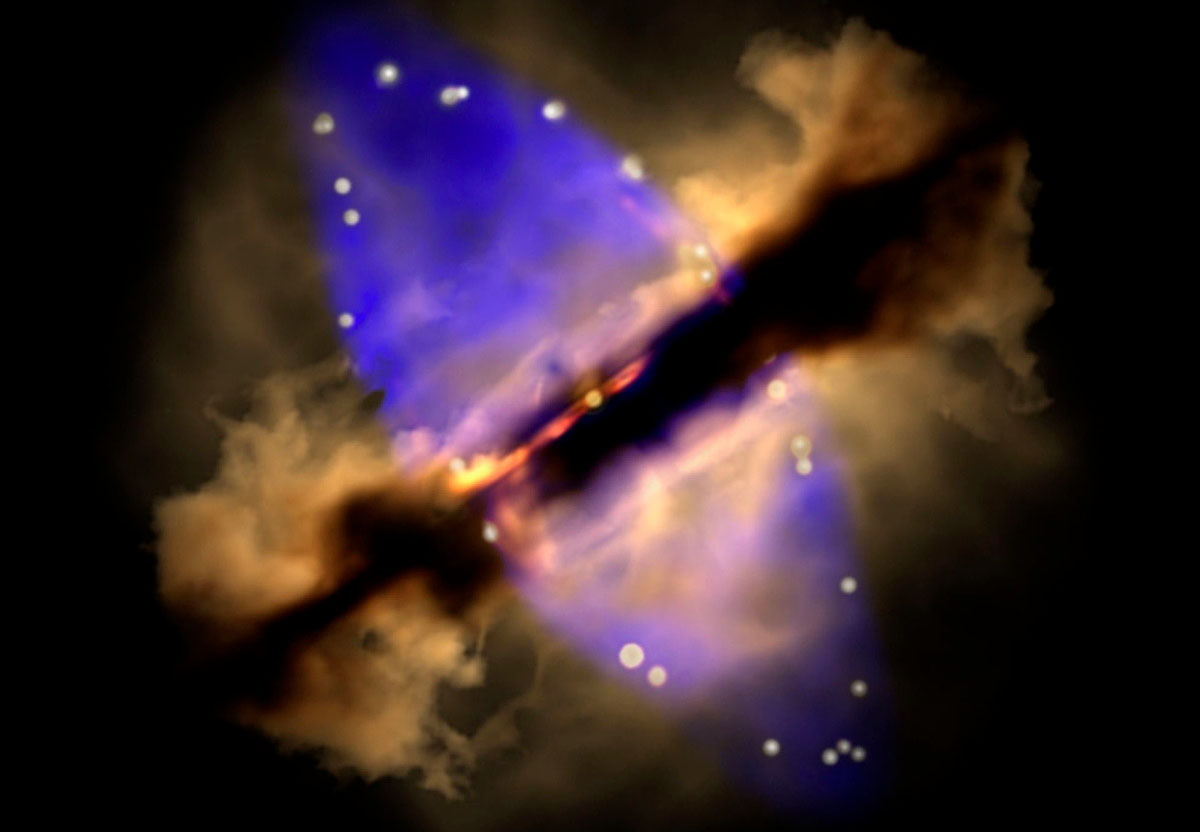A team of astronomers led by Carlos Carrasco-Gonzalez (from the Center of Radioastronomy and Astrophysics of the National Autonomous University of Mexico) has been able to observe the formation of a massive star over an 18 year period. The beginning and ending images of the star, called W75N(B)-VLA 2, which are almost two decades apart […]
A team of astronomers led by Carlos Carrasco-Gonzalez (from the Center of Radioastronomy and Astrophysics of the National Autonomous University of Mexico) has been able to observe the formation of a massive star over an 18 year period. The beginning and ending images of the star, called W75N(B)-VLA 2, which are almost two decades apart show a dramatic difference enabling the observers get a unique, “real-time’ look into the development of massive stars in the earliest stages of their formation.
The images of the massive star which is 4200 light years away from our own planet were taken with the help of National Science Foundation’s Karl G. Jansky Very Large Array (VLA). They then compared the images taken in 2014 with an earlier VLA image dated 1996.
“The comparison is remarkable,” said Gonzalez who was leading the research team. While the 1996 image shows a ‘compact region of a hot, ionized wind ejected from the young star’ the more recent image of it shows ‘that ejected wind deformed into an distinctly elongated outflow.’
“We’re seeing this dramatic change in real time, so this object is providing us an exciting opportunity to watch over the next few years as a very young star goes through the early stages of its formation,” he added.
“In the span of only 18 years, we’ve seen exactly what we predicted.”
The scientists believed that the young star was forming in a dense, gaseous environment, and was surrounded by a doughnut-shaped, dusty torus. The star, believes the team, has episodes during which it ejects a hot, ionized wind for several years. In the initial years, the wind which can expand in any direction forms a spherical shape around the star. With the passage of time, the wind hits the dusty torus, slowing it down.
‘Wind expanding outward along the poles of the torus, where there was less resistance, moves more quickly, resulting in an elongated shape for the outflow,’ said the paper which was published in the journal Science.
“Our understanding of how massive young stars develop is much less complete than our understanding of how Sun-like stars develop” Carrasco-Gonzalez says. “It’s going to be really great to be able to watch one as it changes.”
“We expect to learn a lot from this object.”
The enormously sized star is believed to be almost eight times as massive than our own sun.


Leave a Reply